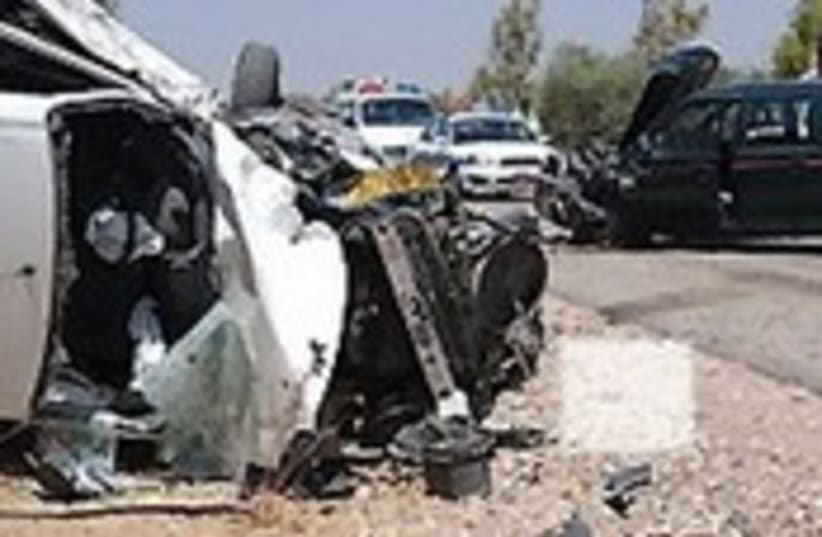Researchers at the Israel Police Traffic Divisiontogether with a group of psychology students from Rupin College areconducting a study on the psychology of drivers in an effort to createa tool that will help traffic officers identify dangerous motorists.
Inan interview with The Jerusalem Post on Tuesday, Ch.-Supt. EranFinesmesser, head of the Traffic Division's research section, explainedthe workings of the proposed system.
"Right now we are in the midst of conducting research to helpbuild a system that will analyze every driver's driving record and helpthe officers in the field decide how to behave with the specific driverstanding in front of them," said Finesmesser.
"The idea is to take the relevant driving history and apply itto an artificial intelligence program that will present the officerwith an evaluation of the driver's prior behavior and the risk he orshe presents on the road."
The student's job is to conduct a review of all thestudies published on dangerous driving behaviors and out of that, drawout the indicators that make up a profile of a dangerous driver.
"These include character traits like impulsiveness, inabilityto defer gratification, risk-taking tendencies and tendency to expressrage," said Finesmesser.
"Wethen take existing models for gauging violent tendencies, like the onesthat the police use to identify likely cases of spousal abuse, combinethem with our national traffic violations database and our nationalaccident report database and synthesize them to give an evaluativereading of each and every driver and their likelihood to pose a risk,"said Finesmesser.
Finesmesser explained that when someone is caught committing aserious traffic violation, they go to a hearing before a trafficofficer, either in the field or at a police station. That officer hasaccess to the driver's driving record, which shows every trafficoffense the driver has committed since receiving their license.
It is then up to the officer to decide how to proceed; they candecide to take away the license, to confiscate the vehicle, to fine thedriver, to arrest him or to let him off with a warning.
"This system will give the hearing officer a valuable tool fordetermining the likelihood that a given driver will offend again. Itwill show only the relevant offenses and provide an intelligentevaluation of the risk he or she presents.
"The reading will be presented graphically on the officer'scomputer as a 'danger gauge,' with the meter pointing to the red ifthere is a serious concern of risk," said Finesmesser. "This minimizesthe room for error and will help make sure that a first-time offenderisn't punished too severely or that a repeated dangerous offender willbe let off the hook."
Finesmesser said that they hope to have a working pilot projectready to go by the end of 2010. When complete, the system will be thefirst of its kind used by traffic police anywhere.
